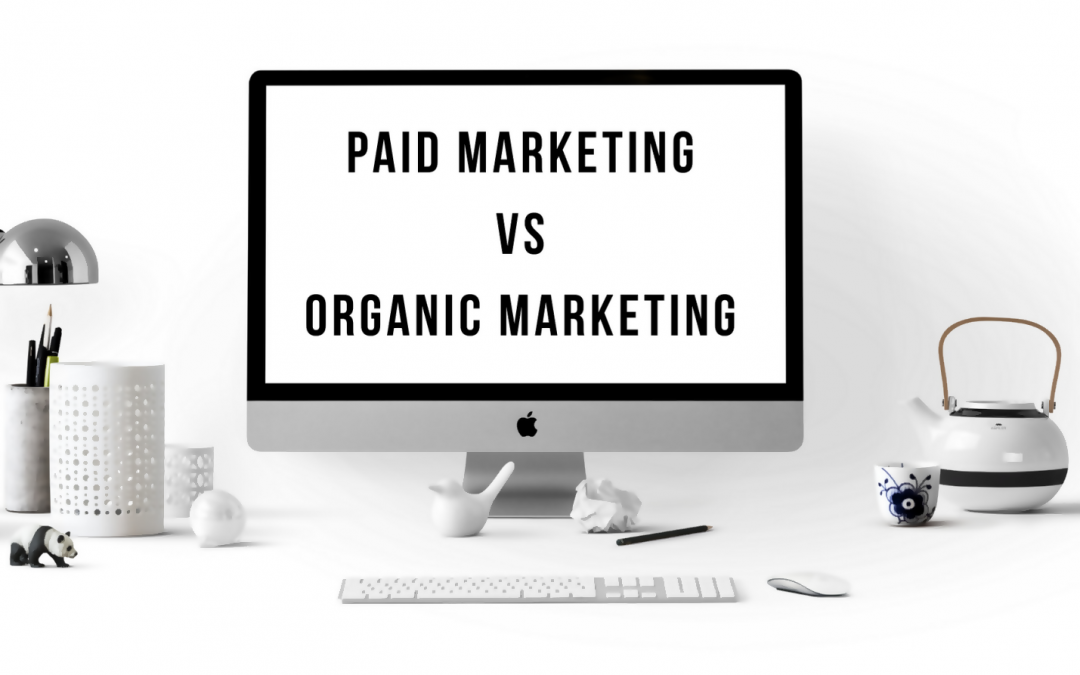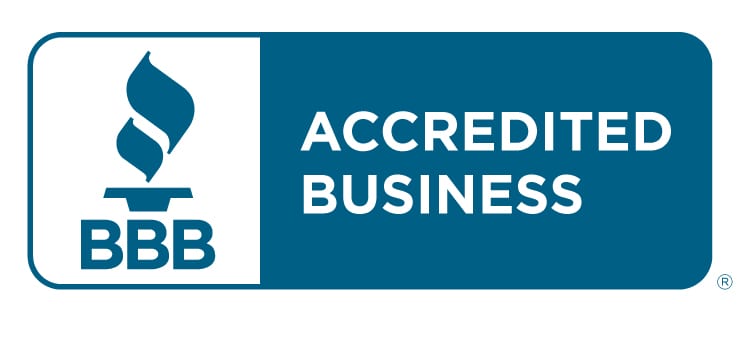Starting a business is already hard work, but what makes it even harder is marketing it. You’ll also feel a lot of pressure seeing other businesses implement different kinds of marketing strategies that you’re totally new to. So let’s step back a little bit and talk about the two different types of marketing: Paid Marketing and Organic Marketing.
Whatever niche market your business is in or target market that you serve, marketing will fall into these two categories fields. Paid marketing and organic marketing are often used together, but knowing the difference between the two will help you better plan your campaigns so that they’ll result in higher brand recognition and increased sales.

What is Organic Marketing?
The overall goal of organic marketing is to tell your brand’s story and develop customer loyalty whether it’s interacting with them on social media, providing valuable/educational content or showing some behind-the-scenes action of what happens in your company.
A strategy can be considered organic if it meets the following criteria:
- Authentic
- Natural
- Value-Based
- Long-term
Let’s take Business X as an example, who sells juicers and blenders online, and come up with a simple organic marketing strategy. Don’t worry if you’re not in this line of business because the concepts can still be applied to any kind of business.
- Business X sells blenders and juicers but there are also other companies who do that. In order for Business X to stand out from its competitors, it can publish weekly videos on YouTube about juice/smoothie recipes that its customers can follow while using their blenders.
- The weekly videos can be posted on the company’s website and social media accounts too. They can even come up with a unique name for this weekly segment so their audience have a name to associate it with.
- The company can also re-purpose the videos into blog posts to cater to those people who don’t always spend their time on YouTube or people who prefer reading than watching a video.
- Working with influencers to promote the blenders and juicers can also work! Business X can contact influencers who are in the fitness, health, and other relevant industries that they think would attract potential customers.
- After implementing these organic marketing strategies, Business X can now analyze the data and information it has gathered to think about its next strategies. A few examples that the company should look at would be the top-performing blog posts, most-viewed videos, and high-engagement social media posts.
Try to look at the strategies mentioned above, you’ll notice that there’s no aggressive selling involved. The purpose is to create a community around the brand and eventually gain the trust of the consumers. Always remember that trust is one of the most important things in business and organic marketing is the best way to achieve that.
Key Performance Indicators for Organic Marketing
Even though organic marketing is all about authenticity but it doesn’t that you don’t track your strategies’ performance. If you want to know whether your efforts are paying off or not, here are some KPIs that you would want to track:
- Leads or Sales – You need to track the number of sales or leads you get from your videos, blog posts or social media posts. What you can do is you can put discount codes, CTAs (Call-to-Actions), and product links on your content so you would know which specific content the sale or lead came from.
- Traffic – Whether it’s website, social media or landing page traffic, the purpose of measuring this is to understand what content works best for your business. This will help you to better understand the needs of your customers so you can serve them better.
- Formats – Tracking formats (social media, blog posts, videos, and etc) is important for a business because even though it’s important for a business to have marketing campaigns on all platforms, you need to put into consideration on what works best. For example, if Business X (as mentioned above) gains more traffic from social media compared to its newsletter, then it’s safe to say that it should exert more efforts on social media.

What is Paid Marketing?
While Organic Marketing aims to build brand identity, Paid Marketing aims for conversion in a swift and straightforward manner. It doesn’t tell a story to its audience but it tells them exactly what it wants them to do.
You don’t just rely on natural traffic but you put money in to push your strategies forward. For example, instead of waiting for people to naturally discover your video on Facebook or Instagram, you try to push it by making it a sponsored post (ad) with the goal of either getting traffic, followers, email subscribers, etc.
- Artificial
- Aggressive
- Short-term
Now, let’s continue what we’ve discussed above and come up with a Paid Marketing strategy for Business X.
- Business X aims to hit its target sales for its blenders and juicers for the last quarter of the year. Since the holiday season is coming up, it needs to come up with a winning Facebook Ad that will produce sales. To do this, the team creates 10 ad sets that will be subject for testing for a month.
- After the testing period, the marketing team will determine which ad worked best so that they can scale this and put more budget behind it.
- Once the campaign is finished, the Business X will now look at all the data and check their return on ad spend.
In this case, the goal of paid marketing is sales and you can see that there’s a timeline set for it which is to achieve a desired amount of sales before the year ends. There is hard-selling involved because those ad sets will be shown to consumers multiple times within a day.
Key Performance Indicators for Paid Marketing
- Platforms – You need to measure the kind of traffic, engagement or whatever metric you’re using to track the performance of the ads you’ve placed on different platforms. For example, your ads may work better as messenger ads compared to the normal ad that shows on your feeds.
- Conversion Rates – This would refer to the desired result or outcome that you’d want your ads to have. These can be email sign-ups, purchases or webinar registrations.
- Ad Engagement – Ads have components that you can optimize to boost its performance such as images, text or call-to-action. Measuring these components during the testing phase will allow you to come up with better ads in the future.
- Ad Types – This measures the performance of the different ad types you’ve used for your paid marketing campaign such as look-alike audience ads, re targeting ads, and more.
Paid Marketing and Organic Marketing are both important. The two can be combined together, but you need to assess which one should focus your efforts on.
It usually boils down to sales and marketing goals you’ve set for your business. Now that you know the difference, which type of marketing do you think would best serve your business right now? Is it Paid Marketing, Organic Marketing, or a mix of both?



